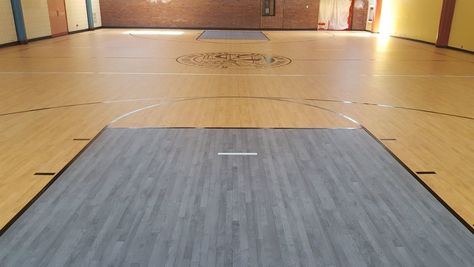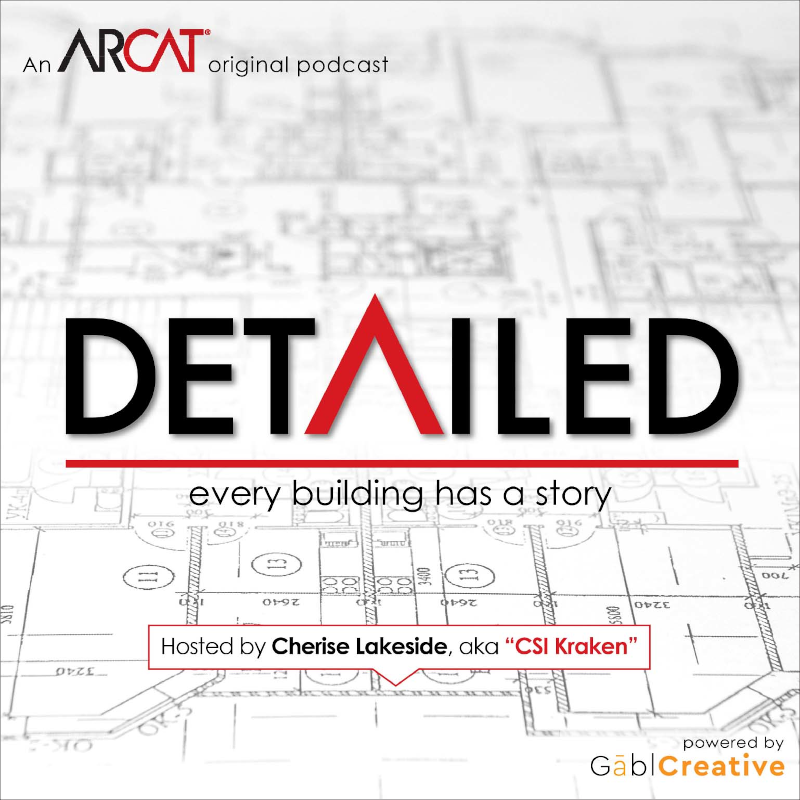|
Contributed by Eric D. Lussier (Editor's Note: Before you start Part 2, please be sure you've read Part 1 here. CUSHIONED SHEET VINYL Vinyl, namely cushioned sheet vinyl or PVC, is one of today’s most popular synthetic surfaces for sports. Coming from a wide range of manufacturers in a variety of thicknesses, widths, colors and designs, the most common of these floors mimics the appearance of a traditional wood gym floor. Premade in factories the world over, the vinyl is rolled up, packaged and shipped from the factory to a distribution house, the warehouse or a jobsite directly. The playing surface itself is typically pure vinyl and prefinished at the factory. Urethane prefinishes prevent the need to reapply annual finishes and help aid in cleanliness and maintenance of the floor. Any lines, lettering or logos are painted onto the surface of the rolled vinyl in the field. Vinyl surfaces are very popular in elementary and middle schools, but also see installations in high schools, colleges, churches, YMCAs, daycare facilities and more. Built for sport usage of all types, cushioned sheet vinyl systems are heavily used for multipurpose areas. As water and liquids do not harm or, typically, stain the floor, it is common to see cafeteria and gymnasium hybrids — cafetoriums — receiving these types of floors. URETHANE Once prevalent, full-depth urethane surfaces have been mostly phased out and are now pad-and-pour or sandwich systems. Incorporating a recycled rubber pad that is adhered directly to the substrate or a slipsheet, the rubber has its pores sealed and is then coated with a 2 mm or 3 mm urethane lift. The lift is then coated with a color layer, offering one of the most popular synthetic surfaces on the market, which is also completely seamless. Ideal for multipurpose usage, the overall resiliency of the rubber pad is more suited for heavy loads over the closed-cell foam of a cushioned sheet vinyl. While 4 mm, 7 mm and 9 mm are the most prevalent rubber pad thicknesses on the market, almost any thickness is available. With all components manufactured in the factory, the pore sealer, urethane lift and painted wear layer are shipped to the job in pails in two- or three-part kits. Dozens of pails are mixed onsite, making conditions such as heat and relative humidity in the climate-controlled space to be of the utmost importance. Products are hand troweled or hand rolled upon the surface, and the final painted wear layer can be as thin as a piece of paper. This painted wear layer can wear through in high-traffic areas, and it is typical for the floor to receive a new applied surface periodically, perhaps anywhere from five to 15 years depending on usage. RUBBER
Rubber flooring can be broken into two distinct types: recycled rubber and vulcanized rubber, offering two varied price points. Recycled rubber is traditionally manufactured from recycled car tires and thus is normally black. Ethylene propylene diene monomer (EPDM) synthetic rubber is typically introduced to give the product color, ranging from 5 percent up to 95 percent color chips. Recycled rubber sees a good deal of popularity where heavy loads are involved, such as cardio machines or free weights. The most popular vulcanized rubber surfaces are composed of a recycled base layer and topped off with a virgin rubber layer. These virgin rubber layers offer more color and tend to lend less of a car tire smell to the facility. While recycled rubber-based floors are normally on the lower end of the spectrum per square foot, vulcanized rubber tends to be expensive, with systems starting out at $10 and more per square foot just for materials. Almost all rubber floors are unseamed, with the rolls abutting each other. Tiles, whether interlocking or square-edged are also a popular option in both types. Built to handle abuse, the use of vulcanized rubber in gymnasiums and indoor tracks has waned recently. Meanwhile, the usage of recycled rubber flooring is gaining in popularity due to the introduction of high-content EPDM chips and the calendaring to a vinyl wear layer. Combining the look and maintenance of a vinyl wear layer with the rigidity of a rubber base mat offers a high point load resistance. Almost all rubber flooring is unfinished and untreated at the factory. The field application of finishes are utilized to ease maintenance and will require stripping and reapplication. LINOLEUM An all-natural surface, the use of linoleum as a sports floor is rare, but does exist. While Europe was once home to dozens and dozens of linoleum manufacturers, linoleum is now only made by a handful of factories in the world. A seamed product offering little shock absorption without an underlayment system, the wear layer of linoleum is sturdy and rigid. The use of linoleum may be driven by its manufacturing process, as it is made entirely from renewable components. Common designs are either full color or feature a marbleized appearance. Typically, linoleum is unfinished from the factory, and a field finish must be periodically applied, stripped and reapplied similar to VCT. Factory urethane prefinished linoleum has seen a rise in popularity and with it, an increased interest in usage, as maintenance of linoleum can be difficult. POLYPROPYLENE Polypropylene (PP) is a thermoplastic polymer used to create interlocking, modular tiles. Offering no shock absorption without the introduction of a recycled rubber pad underneath, PP tiles tend to be a budget-conscious solution for sports flooring. Most common PP tiles are 12 by 12 inches, with open seams, available in a variety of solid colors; a few manufacturers mimic wood designs. These click-tile systems tend to be very noisy from foot traffic alone, due to the rigid nature of the surface. PP tiles handle multipurpose activities well. PP tiles are hard plastic in nature and are not finished in the factory or the field. Dirt collects on the surface and does not penetrate the wear layer. COMBINATION SYSTEMS The last type of flooring to be outlined is a hybrid of systems covered above. Typically consisting of a shock-absorbing pad, an engineered wood layer and covered with any of the synthetic choices above, some combination systems can offer very high levels of force reduction. With overall thicknesses of an inch or greater, the use of combination systems are being evaluated to fill in the gap when a hardwood floor has been removed and an owner wants to move toward a synthetic surface. The combination systems on the market are more expensive per square foot than a traditional wood gym floor; however, the owner will recuperate savings over time due to the lower maintenance costs of most synthetic floors. GETTING ADDITIONAL INFORMATION With all of the different types of sports surfaces available, there is no one-size-fits-all answer to the question “Which floor is the best fit for me?” Selecting a floor should be based on a handful of criteria, including intended usage and users, installation and operational budget constraints, and environmental conditions such as high moisture or lack of heating or air conditioning. A qualified sports flooring installer should be able to answer any questions you have related to coating and other maintenance requirements, or refer you to local installations where you can talk firsthand with an owner who has a history with the proposed product
0 Comments
Leave a Reply. |
AboutLet's Fix Construction is an avenue to offer creative solutions, separate myths from facts and erase misconceptions about the architecture, engineering and construction (AEC) industry. Check out Cherise's latest podcast
Get blog post notifications hereArchives
March 2022
Categories
All
|


 RSS Feed
RSS Feed
